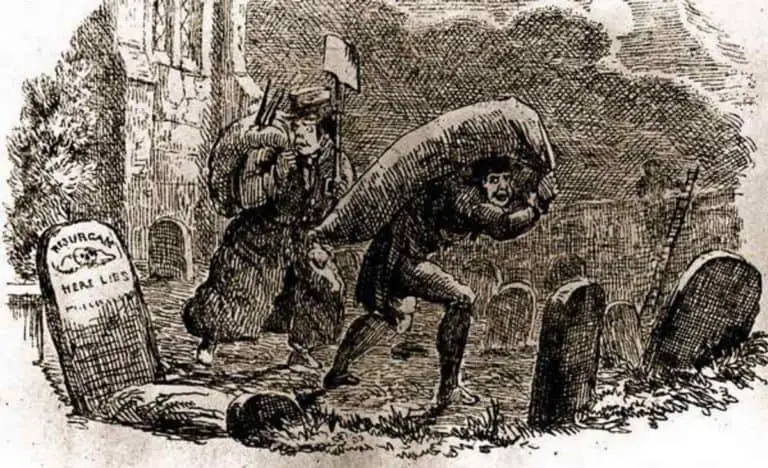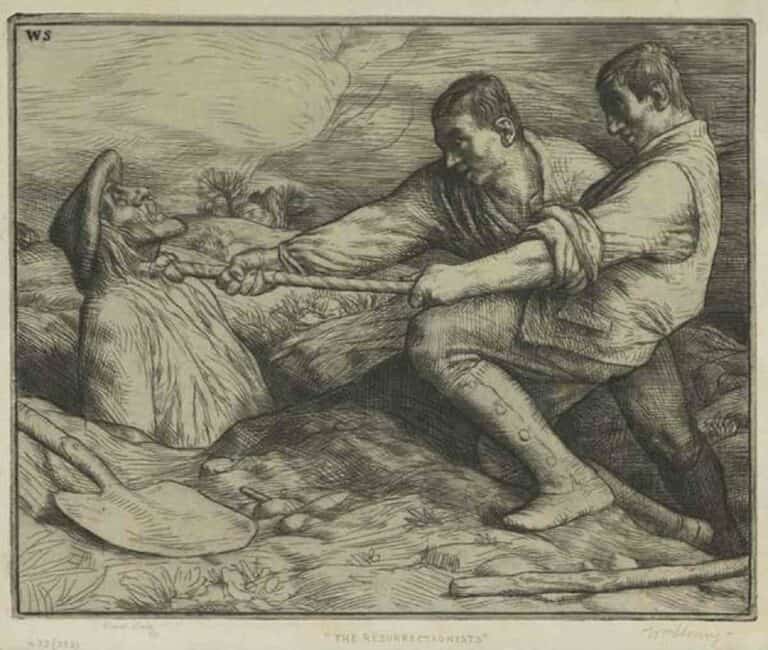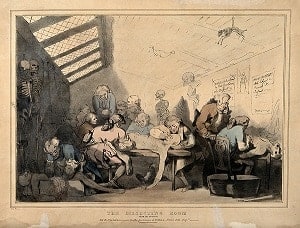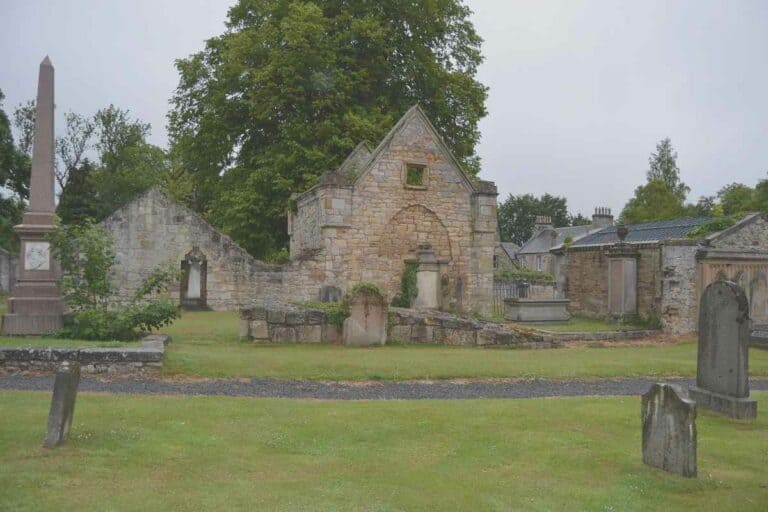‘Making a Killing’: How Much Money Did Burke & Hare Make?
Most people, if they’re interested in the macabre world of Burke and Hare, will know that these two men killed at least 16 people and that the bodies were sold to leading anatomist Dr Robert Knox of Surgeon’s Square, Edinburgh.
But with a corpse having an average retail value of £10, just how much money did Burke and Hare actually make during their ten-month killing spree?
Burke and Hare received an average of £10 for each cadaver they sold to Dr Robert Knox. Their first sale, that of a soldier named Donald, fetched £7 10s which wasn’t quite spilt 50/50. Burke received £3 5s while Hare took a larger cut of £4 5s. Their last victim, Mary Docherty, was not paid for in full, and instead was held on approval; £5 down payment with the £5 balance to be paid once Dr Knox had viewed the corpse.
In this post, I’ve decided to look closer at the payments received by Burke and Hare and to try to get an idea of how much money they actually made in the few short months that they were active. It’s time to pull some information together and get some stats.
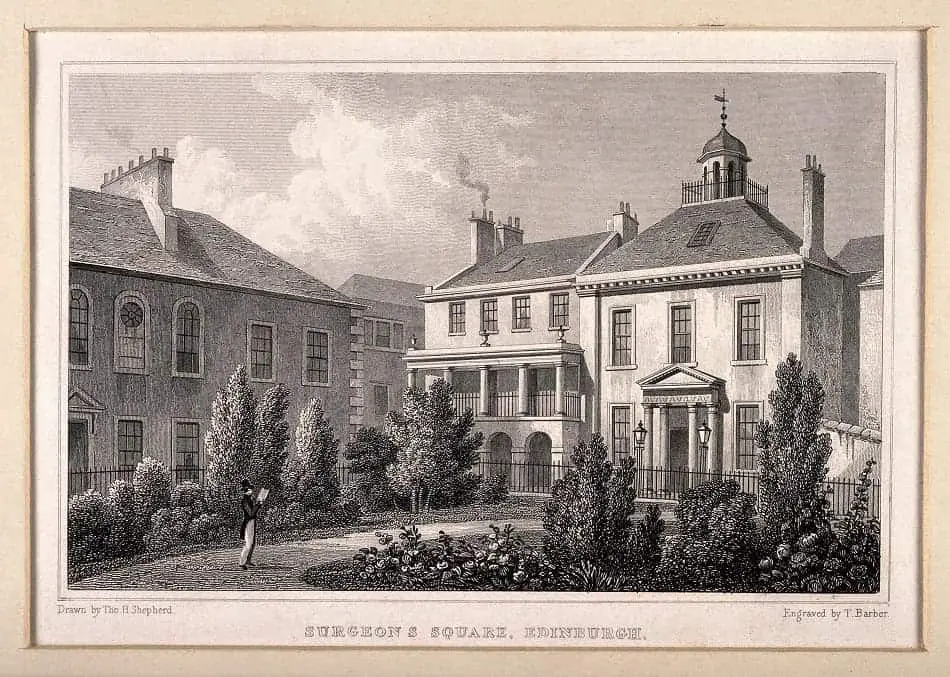
Who were Burke and Hare’s Victims
Before we take a look at the money Burke and Hare received from Dr Knox, I think it’s perhaps wise to quickly look at the order in which the victims were murdered.
Whichever book you end up reading you’ll soon realise that people don’t always agree on the chronological order of the killings.
This can be quite confusing, and I confess, I still get things muddled up between authors, who put who where etc. but in one of the books I read, Brian Bailey’s ‘Burke and Hare: The Year of the Ghouls’ there is an extremely useful table showing just a few of these differences.
I’ve included a copy of Bailey’s table for you so you can compare the difference in order for yourself.
It is perhaps unsurprising that there is no confirmed sequence to the killings for Burke himself had no idea of the order in which the victims were dispatched.
| BURKE’S OFFICIAL STATEMENT (Given 3 Jan 1829) | BURKE’S STATEMENT PRINTED IN THE EDINBURGH EVENING COURANT (Printed 7 Feb 1829) | WILLIAM ROUGHHEAD (Notable British Trials 1948) | HUGH DOUGLAS (Burke and Hare 1973) | BRIAN BAILEY (Burke and Hare 2002) |
|---|---|---|---|---|
| Simpson | Simpson | Joseph | Joseph | Joseph |
| Joseph | Englishman | Englishman | Simpson | Englishman |
| Paterson | ‘Old Woman’ | Simpson | Englishman | Simpson |
| ‘Old Woman’ | Paterson | ‘Old Woman’ | ‘Old Woman’ | Paterson |
| Englishman | Grandmother | Paterson | Paterson | ‘Old Woman’ |
| Mrs Haldane | Grandson | Effie | Effie | Mrs Haldane |
| Effie | Joseph | Drunk Woman | Drunk Woman | Effie |
| Grandmother | Lodger (Hare) | Grandmother | Grandmother | Drunk Woman |
| Grandson | Effie | Grandson | Grandson | Grandmother |
| Drunk Woman | Drunk Woman | Lodger (Hare) | Lodger (Hare) | Grandson |
| Lodger (Hare) | Jamie Wilson | Ann McDougal | Mrs Ostler | Lodger (Hare) |
| Marg. Haldane | Ann McDougal | Mrs Ostler | Ann McDougal | Marg. Haldane |
| Mrs Ostler | Mrs Haldane | Mrs Haldane | Mrs Haldane | Mrs Ostler |
| Ann McDougal | Marg. Haldane | Marg. Haldane | Marg. Haldane | Ann McDougal |
| Jamie Wilson | Mrs Ostler | Jamie Wilson | Jamie Wilson | Jamie Wilson |
| Mrs Docherty | Mrs Docherty | Mrs Docherty | Mrs Docherty | Mrs Docherty |
There is, and probably always will, be much debate as to the order of Burke and Hare’s victims, and for this post, I have followed the order in Bailey’s book
Donald, The Old Soldier: Burke and Hare’s First Sale
It was purely by chance that Burke and Hare fell into the dead body business, (read a full account of their life and crimes here) and I truly believe that they would not have become murderers had they not realised the profits to be made from cadavers.
Their first victim, a lodger by the name of Donald, died of dropsy before the quarterly settlement from his army pension was paid out, a sum that would help settle his £4 rent bill with Wiliam Hare.
Although it was never their intention to sell Donald, Hare was out of pocket and so the ever enterprising William Burke suggested selling his cadaver to the surgeons.
The antics of Edinburgh’s true body snatchers, the likes of ‘Merry Andrew’ whose account you can read in another blog post of mine here, would have been known in a dark, depraved area such as the West Port, and so it was probably no surprise that Burke, and probably Hare, knew how much a corpse was worth to the anatomists.
Donald was destined for a pauper funeral. With no money, friends or family to claim his body, there would certainly have been no questions asked should he go missing.
Once the local carpenter had delivered a basic coffin to Hare’s lodging house in Tanner’s Close, Donald’s body, by all accounts, actually seems to have made it inside the wooden casing.
But with the coast clear, he was just as quickly removed again and the weight of his corpse replaced with tanner’s bark from the backyard.
The novice corpse dealers tentatively made enquiries at Edinburgh University for Professor Munro but the students Burke and Hare had stumbled into that night were about to change the course of history forever.
Instead of directing them to Professor Munro’s rooms, they directed them to the dissecting rooms of the now infamous Dr Robert Knox.
Unsure of protocol or even how much to expect for this first consignment, perhaps Dr Knox got a bargain for apart from their last victim Mary Docherty, Donald’s corpse would receive the least amount of profit for the pair, £7 10s.
Total Received to Date £7.10s
Joseph The Lodger: Burke and Hare’s First Murder
Sick lodgers were becoming a bit of a trend at Hare’s house and in a desperate need to save their reputation, if indeed they ever had one, they needed to deal with Joseph.
Their first murder victim, Joseph, was a miller by trade who, delirious on the bed and sick with a fever, would not have been a welcome guest. A quick £10 profit was had when his body was trundled round to Knox’s place in the tea chest that was reserved for such transactions.
The pair had dispatched him just as they would the rest. Burke throwing himself over Joseph’s chest and Hare smothering him with a pillow.
Total Received to Date: £17.10s
Victims 2 & 3: An English Man From Cheshire & Abigail Simpson

Burke and Hare’s next two targets, or ‘shots’ as they called them, each brought in £10, although there is some dispute as to the order in which they were murdered.
It is sometimes noted that Abigail Simpson, a salt seller from Gilmerton was Burke and Hare’s next victim, although most sources cite instead the ‘English male lodger from Cheshire’. Burke himself gives Simpson and the ‘English Male’ as victims one and two, putting their murders even above that of Joseph the miller. Not bad for a man who also confesses that he knew the names of non of his victims.
‘The English Man From Cheshire’
The male lodger from Cheshire, a man ‘about forty years of age’ was employed as a tinker selling matches and tinder. He was lodging at Hare’s for just a few nights and according to Burke’s confession printed in the Edinburgh Evening Courant on 7th February 1829, he apparently never did find out his name.
Jaundiced and a stranger in a big city, the last thing the Hare’s wanted was to have another sickly lodger on his hands.
It is with this case that author Brian Bailey points out, that the pillow technique, used to suffocate their previous victims was dispensed of. Burke and Hare had found a much more effective manner of killing their victims.
Placing the first two fingers either side of the nose and the thumb under the chin, the flow of air could be stemmed by drawing the two together. As Bailey rightly notes, ‘Burking’ had thus been invented.
To understand the hype the press cause in relation to the term ‘Burking’, you may find one of my other posts, ‘The Simple Art of Burking’ an interesting read.
The man from Cheshire was smothered and suffocated, stripped of his clothes and bundled into the tea chest bound for Dr Knox. He was corpse would earn the pair £10, which was fast becoming the going rate.
Abigail Simpson
Edinburgh was a magnet for all types of traders and Abigail Simpson was no different.
Living only a few miles outside of the City in Gilmerton, Abigail found herself on Tanner’s close around the 11th or 12th February 1828 trying to increase her meagre pension by selling salt and camstine.*
After spending the afternoon drinking with Hare, or so Burke’s version of the story goes, she became so drunk that she had to stay at the lodging house until she was less inebriated.
When she rallied the next morning, they gave her more alcohol and then proceeded to ‘Burke’ her like all the rest.
The tea chest was brought out again, her body stripped and Abigail duly started on her journey to Dr Knox’s. Remarking on the freshness of the cadaver, Knox handed over £10.
Abigail’s was to be the first murder according to Burke’s confession in the Courant. The date of the murder staying in his memory, 12th February 1828.
Total Received To Date: £37.10s
Mary Paterson: Burke and Hare’s First Mistake
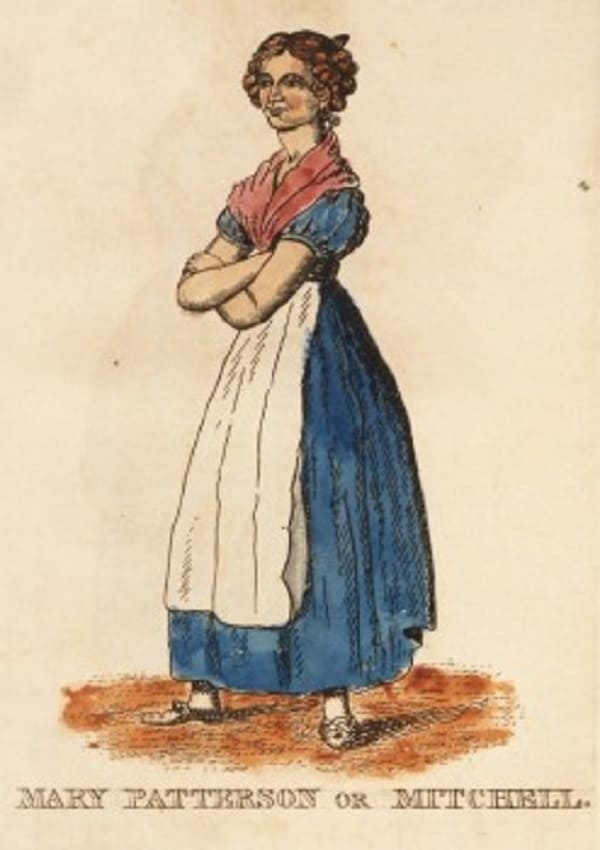
Burke and Hare’s fifth victim had been fit and well only 24 hrs earlier and it was perhaps this sudden demise, and her appearance on the dissecting table, that caused a few raised eyebrows.
It was the fact that Paterson was noted to be so beautiful that brought her to the attention of the young anatomists in Knox’s dissecting rooms. Sketches were made from her corpse, and accounts seem to suggest that she was a favoured subject.
Mary Paterson, like all the others, had been plied with drink and smothered. Her body was so fresh when it was delivered to Dr Knox’s rooms that it was said to still be warm. The students asked Burke to remove Paterson’s hair that was still tied with curling papers and she was duly placed in a barrel of whisky and stored for three months before she was anatomised.
Despite her beauty, Mary only ‘fetched’ £8 when she was delivered to the dissecting rooms at the beginning of April 1828.
However, a man in Dr Knox’s employment (and of no relation to Mary) named David Paterson stated that her corpse fetched a full £10, something that appears to be more reasonable considering the condition of her body in relation to those previously supplied.
For the sake of the total calculation, I have used the original price given of £8.
Total Received To Date £25.10s
Burke and Hare’s Murdering Spree
After Mary’s murder in April, the pair seem to have acted swiftly. It was already nearing the end of February, and with the dissecting season soon drawing to an end, there wouldn’t have been much time in which to supply Knox with more cadavers.
The ‘Old Woman’
Burke and Hare’s next victim, killed around February/March 1828 is remembered quite unaffectionately as an ‘Old Woman’ and was to become the only one of their victims referred to in this way.
No name was known, only a description, and the knowledge that she would fetch a decent price when delivered to Dr Knox. The usual sum of £10.
Mrs Mary Haldane
It is unknown exactly when Mary Haldane was killed but after a self-induced evening of drink, it was perhaps her need for rest that saw her become Burke and Hare’s next victim.
She’d wandered into the stable’s at the back of Tanner’s Close where she was lodging and had fallen asleep in the straw only to be discovered later that evening by Hare when he went to tend to the animals.
Mrs Haldane was swiftly finished off. Her body was put into the all now familiar tea chest, but unfortunately, the price paid for Mrs Haldane has not been recorded and is now lost forever.
Effy/Effie
One of the few names that Burke could remember was that of cinder gatherer Effy/Effie. She was most likely known to Burke by all accounts, having sold him scraps of leather for his work as a cobbler.
In May 1828, not long after Mrs Haldane had been delivered to Dr Knox and right at the end of the dissecting season, Margaret Hare lured Effie in from the streets into the lodging house at Tanner’s Close.
Quickly dispatched, the tea chest was once again brought out and trundled round to the back doors of the anatomy school in Surgeon’s Square.
Effie’s extremely fresh corpse added a further £10 to the pot. A welcome sum heading into the summer months.
Drunk Woman
Referred to only as the ‘Drunk Woman’, the pair’s next victim was found sitting on the stairs of the West-Port watch house in the process of being moved on by the constables.
Burke, who at this time is said to have had a good relationship with the police, offered to take her off their hands, something that they were exceedingly grateful for.
It was the last time the woman was seen before her body was exchanged for £10.
Grandson & Grandmother
Taking rooms at Tanner’s Close in June 1828, the next guests at the threepence a night lodging-house quickly met their demise.
Visiting Edinburgh from Glasgow, this grandmother, with her twelve-year-old grandson unwittingly wandered into Burke and Hare’s path purely because they wanted a place to stay.
Murdering the Grandmother in the usual way, she was dispatched in the middle of the night while her Grandson sat by the fire with Burke’s common-law wife Nelly McDougal and Mrs Margaret Hare.
Next came the boy’s turn. At twelve years old he was always going to put up a struggle. Burke ended up breaking his back across his knee. Or so the story goes. It is said that this story originates from Alexander Leighton’s Court of Cacus written in 1861 and was compiled from more than the odd theory or two.
These murders are said to have had a lasting effect on Burke, causing him to sleep with a candle next to his bed each night and take comfort in the whisky bottle.
The corpses lay naked on the floor of the bedroom for a few hours before they were folded and squashed into a herring barrel; the tea chest on this occasion being too small.
The goods were exchanged at the summer rate of £8 each, netting the pair a further £16
Total Received To Date: £71.10s
A Killing By Mr Hare
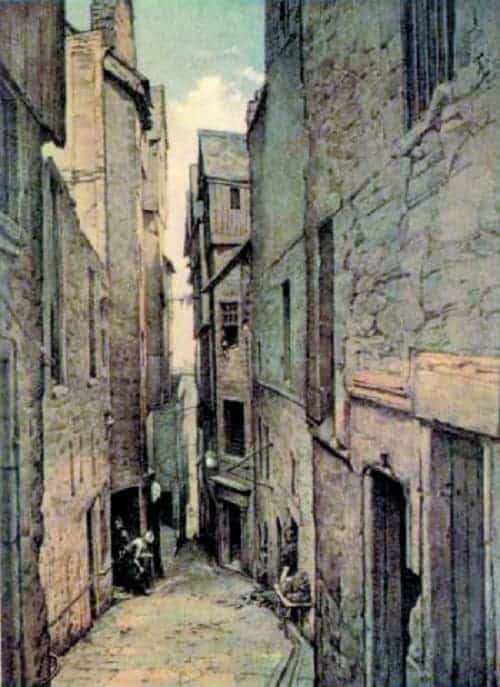
It is at this point that Burke, together with his common-law wife Nelly decides they need a break from all this killing and embark on a trip to Falkirk, visiting Nelly’s father.
When they return, Hare is a little more solvent than when they left and despite denying anything had happened, Burke’s questioning of Dr Knox confirmed his suspicions, that Hare had killed without him.
The female cadaver sold by Hare in the June of 1828 brought him an additional £8 (summer rates) and because Burke didn’t play any part in it, he kept the profits all to himself.
I have not included this cadaver in the running total received by the pair.
Margaret Haldane: The Daughter of Mrs Haldane
Remember Mrs Haldane, the one who was murdered a few months earlier in the stables at the back of Hare’s lodging house? Well, this is her daughter, come to find out where her mother is.
There is lots of confusion as to who Margaret Haldane actually was.
It was known that Mrs Haldane had a daughter, perhaps even two, or even three, and although one had been transported for fourteen years, her other daughter, Margaret, still lived in Edinburgh.
The possible ‘third daughter’ also resided in Edinburgh and went by the name of Peggy.
Is this a shortened version of Margaret and the women are one and the same or was there a Peggy Haldane as Burke suggests in his confession and the murder count for Burke and Hare needs to be altered as Brian Bailey suggests?
Burke and Hare authority Owen Dudley Edwards put the two women very separately, although only names Peggy Haldane, keeping the middle daughter anonymous.
Whichever of Mrs Haldane’s daughters Burke killed, only the one murder is recollected and Margaret is given the swiftest of killings.
Already half-dead with drink, she fell asleep face down on Burke’s bed. He has little to do to finish her off. The lower price of £8 was given for Margaret’s body and the total sum racked up by the pair continued to increase.
Total Received To Date £79.10s
Mrs Ostler/Hostler
The year is moving on and dissecting season is nearly upon us again and Burke’s confession in the Courant gives us the name of their next murder victim.
In September/October 1828, just when the anatomy schools were about to reopen and cadavers would have been in great demand, Mrs Ostler or Hostler, a washerwoman, had the misfortune of visiting Tanner’s Close.
Plied with drink, Mrs Ostler didn’t last long. She was suffocated just like all the rest and bundled into a tea chest.
There she stayed for a number of hours in the passage to the coal house until embarking on her final journey to Dr Knox’s dissecting rooms, and where Burke and Hare received the lower price, some say the summer price, of £8
Total Received To Date: £87.10s
Ann McDougal
Burke and Hare were now seeing an opportunity to make money wherever they went and their next victim, Ann Mcdougal was actually a relative of Burke’s wife, Helen.
Ann, it is presumed, was visiting from Falkirk and had been in Edinburgh only a few days before she was killed. Rather surprisingly, she was staying two streets away at the house of John Broggan, husband to one of Burke’s cousins and so the murder didn’t even happen on the usual killing ground.
Or did it? There is some speculation as to where Ann was ‘burked’. Dudley Edwards quite rightly suggests that too much suspicion would arise if Ann suddenly disappeared from a relatives lodging house.
Instead, he suggests that Ann was staying in a place where she was unknown and instead visited her relatives on an ad hoc basis.
Either way, Ann was killed at Broggan’s, not at Tanner’s close and was bundled into a trunk after she’d been plied with drink and suffocated in the usual way.
The trunk, however, was spotted by Broggan before they were able to deliver her corpse and after bribing him with whisky and money to keep quiet, Burke and Hare swiftly removed her corpse to Surgeon’s Square.
The pair were now receiving a guaranteed £10 for anatomical subjects and this was again added to the pot.
Total Received To Date: £97.10s
The Murder of ‘Daft Jamie’
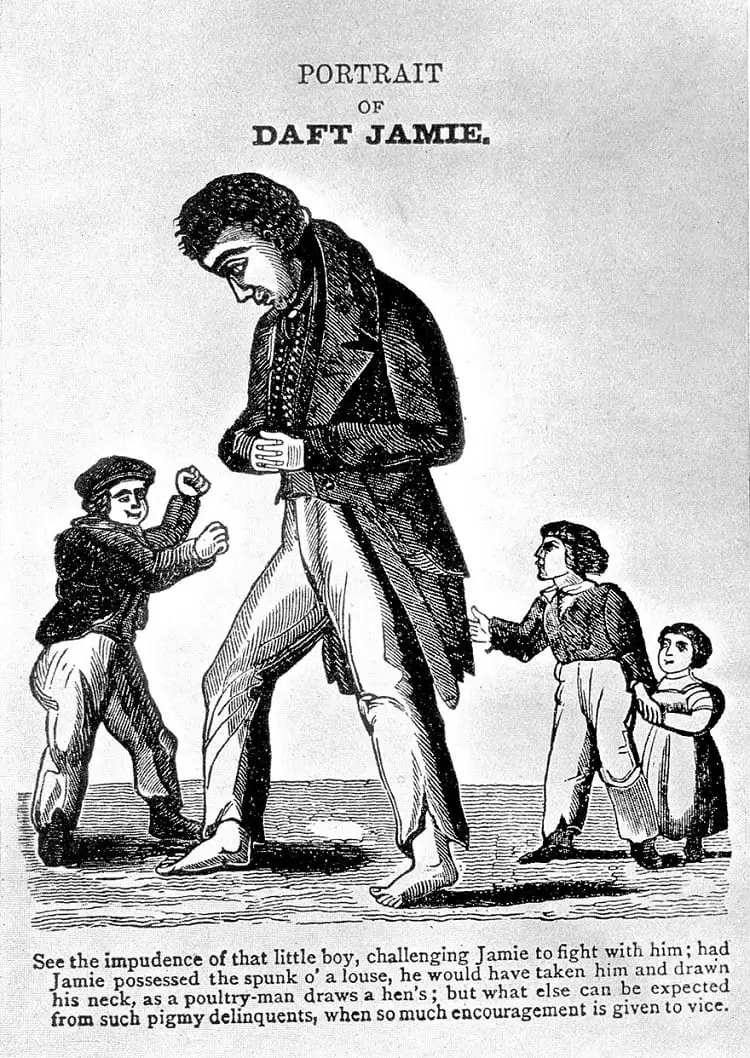
Perhaps Burke and Hare’s most famous killing was of the well-known character ‘Daft Jamie’ or James Wilson, a young man well known on the streets of Edinburgh.
Eighteen-year-old Jamie wandered about the streets of Edinburgh in bare feet, sleeping in doorways and hoping someone would take pity on him, especially during the cold and hard Scottish winters.
You can perhaps imagine the ease in which Margaret Laird encouraged Jamie back to Tanner’s Close and after indicating to Burke that he was to be their next victim, the pair started on their usual course in trying to get Jamie drunk.
The details of Jamie’s death are exceptionally hard to read.
Luring Jamie into a small bedroom, the pair were overly keen on finishing things quickly on this occasion. But Jamie was refusing to take the whisky on offer to him that day, he drank little and had no taste for it as the other victims had.
Their tried and tested method was unravelling and Hare was growing impatient. As Margaret Laird locked the door to the room and slipped the key underneath, William Hare
threw his body on top of Jamie, pressed his hand on his mouth, and held his nose with the other
Putting up a good fight, the pair fell to the ground at which point Burke came to Hare’s assistance, grabbing Jamie’s arms and legs. After a short time where Jamie struggled, it was all over.
He was then stripped of his clothes and bundled into a chest that Hare kept for clothing. His body was exchanged for £10.
Jamie’s appearance in the dissecting rooms caused quite a stir that October day. He was immediately recognised by some students and Knox is said to have ordered the dissection of Jamie’s body immediately.
In an attempt to disguise the cadaver on the table that day, William Fergusson, one of the students Burke and Hare had met when first asking directions to Munro’s dissecting rooms, removed Jamie’s head and feet (Jamie’s feet were known to be deformed) for fear of identification.
And you’re telling me that Dr Knox knew nothing about the source of the cadavers.
Total Received To Date: £97.10s
Mary Docherty: Burke and Hare’s Last Victim

After luring yet another unsuspecting victim back to Tanner’s Close, Burke and Hare’s final ‘shot’ was Mary Docherty, visiting from Glasgow in a hope of finding her son.
Proclaiming to be a distant relative from Ireland, Burke took Mary under his wing and before she knew where she was, she was dancing at a Halloween Party at Burke’s house where copious amounts of whisky were flowing.
She would be discovered the next morning by one of Burke’s more curious lodgers Ann Gray and the fall of the house of Burke and Hare had started.
I have written a fuller account of the last night of Mary’s life in another blog post here, where I’ve also described how her body was found the following morning by lodgers Ann and James Gray.
In a rush of panic after Mary’s body was found, Burke and Hare quickly removed her corpse to Surgeon’s Square so as not to be caught with any evidence.
Dr Knox wasn’t available to inspect the corpse as he had been on previous occasions, the body being delivered over the weekend. A retainer of £5 was therefore paid, with a promise of the balance to be settled once Monday morning came and when Dr Knox was again in residence.
This was never paid.
Total Received To Date: £102.10s
The sum of £102.10s received by the pair was a vast amount of money in 1828. When the average amount for a labourer in 1800 was around £12 per year, raising to £20 per year in 1850, it is perhaps surprising that no one was questioning the rapid rise in state of both Burke and Hare.
The vast majority of the money made by Burke and Hare appears to have been spent immediately on that precious commodity alcohol. Whether either of them ended up putting any of it aside as members of the Borough gang did during the early 1800s in London, seems unlikely.
Researching ‘Making A Killing’
*Camstine is a whitening that women used to use on their doorsteps and was also known as pipe-clay or kaolin. I used Brian Bailey’s book ‘Burke and Hare: The Year of the Ghouls’ when I was researching this post and so I’m thankful to him for this information. His book is a great account of the crimes and trials of the duo. I’ve put a link here if you’re interested in finding it on Amazon.co.uk
If you are interested in the Borough Gang and body snatching in London in the early 1800s, I wrote a post ‘A Week in the Life of a London Body Snatcher’ which follows the gang’s movements in one week in 1812. The information for this post was taken from a diary that was written by one of the gang members himself, body snatcher Joseph Naples.
I have on this occasion not gone into great depth as to the history of each individual victim. My aim here was purely to look at how much money Burke and Hare received and so later blog posts will be written to share the background stories of the victims.
You can read Burke’s full confession in the Edinburgh Evening Courant, 7th February 1829 via the British Newspaper Archive website. This is a subscription website, however, but keep an eye out for free trials or you may wish to just subscribe on a short term basis.
Alexander Leighton’s Court of Cacus can be accessed free online at archive.org here

![‘[A] Miraculous Circumstance’](https://mymacabreroadtrip.com/wp-content/uploads/2020/04/Rawlinson-Resurrection-Men-via-Wellcome-Library-Diggingup1800-768x934.jpg)

